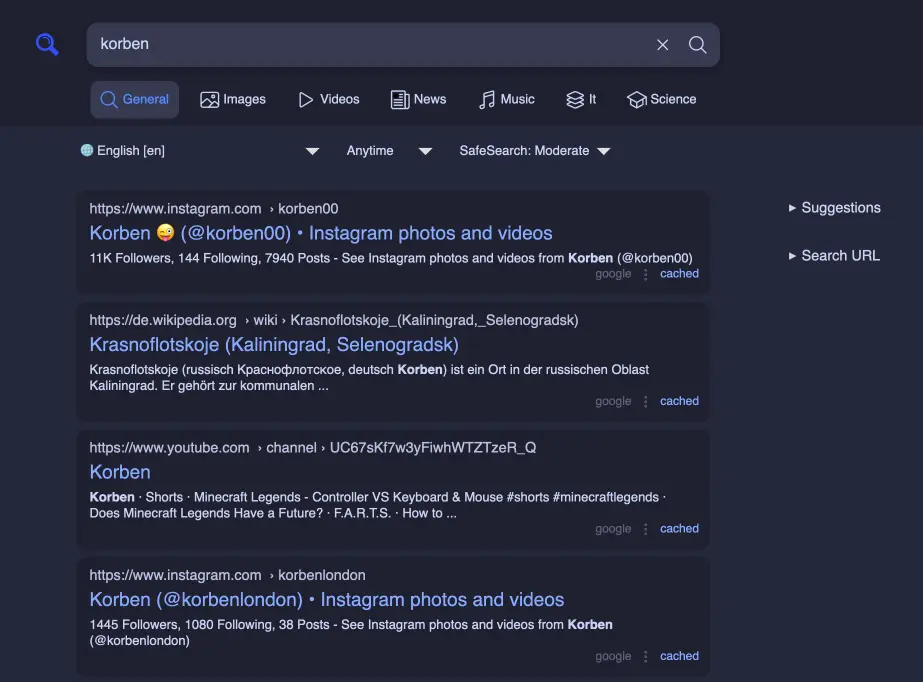Vue lecture
Google Halts Its Diversity and Inclusion Hiring Goals
Linux Foundation Announces Initiative to Support Chromium Ecosystem
Apple and Sony are apparently working on PlayStation VR2 Gaming Controllers for the Vision Pro

Don’t dismiss the Vision Pro just yet. Sure, rumors have been swirling that the company has pretty much halted all production of their flagship spatial computing device, but Bloomberg’s Mark Gurman has some interesting updates. His scoop? Apple and Sony, are reportedly in talks to integrate PlayStation VR2’s Sense controllers with Apple’s Vision Pro headset. This partnership, if realized, could reshape how we think about virtual and mixed reality experiences, seamlessly blending gaming prowess with Apple’s signature design ethos.
The Vision Pro, Apple’s first foray into spatial computing, debuted as a device with lofty ambitions. Relying on gaze-and-pinch interactions paired with hand-tracking, its interface felt futuristic yet restrained when stacked against the tactile immersion offered by physical controllers. While its approach works wonders for casual gaming and productivity tasks, the absence of tactile input left a gaping hole in its potential for more dynamic, fast-paced VR gaming. Enter Sony, whose PS VR2 Sense controllers are heralded for their precise tracking, haptic feedback, and adaptive triggers. It’s easy to see why Apple would tap into Sony’s expertise to elevate Vision Pro’s gaming and interactive experiences.

Gurman, a well-known source of tech scoops, shared that Apple initiated discussions with Sony earlier this year, targeting the seamless integration of the Sense controllers into the Vision Pro ecosystem. The collaboration promises to extend beyond just gaming, allowing users to navigate visionOS interfaces using Sony’s controllers. For Vision Pro, this move is not just a band-aid solution but a strategic decision aimed at capturing a more serious gaming demographic. The absence of robust gaming support has been a sticking point for Vision Pro since its announcement. Adding PS VR2 Sense controllers could be the olive branch Apple extends to hardcore gamers who’ve so far been unimpressed by its current offerings.
What’s particularly intriguing is the potential ripple effect this partnership could have on the gaming industry. Sony has been fiercely protective of its PS VR2 ecosystem, even to the extent of not selling its Sense controllers separately. Yet, this exclusivity might soften if Sony and Apple push ahead with making these controllers available through Apple’s sales channels. Imagine walking into an Apple Store, purchasing a PS VR2 Sense controller, and unlocking new gaming experiences on a Vision Pro. It’s a scenario that positions both companies as collaborators rather than competitors—an unusual but potentially brilliant strategy.
But could this partnership lead to something even bigger? Some speculate it might pave the way for a broader gaming alliance between Apple and Sony. Such a move would undoubtedly send shockwaves through the gaming industry, especially with Microsoft’s Xbox looming large as the primary rival. While Apple could technically develop its own controllers tailored to the Vision Pro, partnering with Sony allows them to sidestep years of R&D and leverage Sony’s established credibility among gamers.
Beyond gaming, this partnership could also enhance Vision Pro’s value proposition for non-gaming applications. The tactile advantages of Sony’s controllers could transform how professionals interact with 3D models, designers manipulate virtual canvases, or filmmakers storyboard immersive scenes. By broadening its use cases, Apple has a shot at making Vision Pro more than a niche device for early adopters or AR enthusiasts.

Yet, as with any ambitious endeavor, there are potential roadblocks. Gurman notes that the announcement, initially planned for weeks ago, was delayed—possibly signaling internal hiccups or last-minute refinements. Whether it’s technical integration challenges, supply chain constraints, or plain old corporate hesitance, there’s always a chance this partnership could stall or be scrapped altogether.
However, the timing of this rumor feels strategic. Vision Pro’s early reviews have highlighted its groundbreaking potential while pointing out areas where it falls short. Apple knows that it must demonstrate more than technological novelty to justify the $3,500 price tag. Teaming up with Sony to bring richer gaming and interactive experiences could be the shot in the arm Vision Pro needs as it prepares for its full release next year.
For now, Apple and Sony remain tight-lipped, but the possibility of this partnership is tantalizing. It paints a picture of a future where Apple’s minimalistic design philosophy meets Sony’s immersive gaming technology, creating an ecosystem that’s not only expansive but compelling. If nothing else, it underscores Apple’s willingness to think beyond its walled garden—a refreshing shift for a company known for keeping things close to its chest.
So, will this be the start of a beautiful friendship between Apple and Sony, or just another chapter in the rumor mill? Only time will tell. But for now, the idea of navigating visionOS with a PS VR2 Sense controller is enough to keep tech enthusiasts and gamers alike dreaming of the possibilities. And if this collaboration does take off, maybe it’s time to rethink that Xbox subscription—just saying.
The post Apple and Sony are apparently working on PlayStation VR2 Gaming Controllers for the Vision Pro first appeared on Yanko Design.
Amazon Nova: Inside the Latest AI Models Revolutionizing Business
Australia Urges ‘High Risk’ Label for OpenAI, Meta, and Google LLMs
Meta Enters AI Movie Fray With Video Gen and Sounds
Meta’s futuristic Orion AR Glasses have Holographic Displays and Neural Control. Apple should take notes

At the Meta Connect 2024 keynote, not only did Mark Zuckerberg debut actual Augmented Reality with holographic displays and neural control, it did so in a device that’s smaller, lighter, and one could argue, more socially acceptable (aka stylish) than Apple’s Vision Pro. Dubbed the Orion, it’s simply a developer prototype for now, but Meta hopes to refine the design, improve the displays, and actually sell it at an affordable price to consumers.
Designer: Meta


Orion is not a bulky headset—it’s a sleek, spectacle-like device that weighs under 100 grams, making it comfortable for extended use. This is an impressive feat considering the amount of technology packed into such a small form factor. While Meta Quest Pro and Apple’s Vision Pro are capable of mixed reality, Orion’s fully transparent, holographic display takes things to a different level. Instead of the passthrough experiences that blend digital elements on top of a live camera feed, Orion projects 3D objects directly into the real world using innovative waveguide technology. The frames are made from magnesium, a super-light metal known for its strength and ability to dissipate heat (something even NASA’s relied on for its space hardware).

The core of this magic is a set of tiny projectors embedded within the arms of the glasses. These projectors beam light into lenses that have nanoscale 3D structures, creating stunningly sharp holographic displays. Zuckerberg emphasized that you could go about your day—whether you’re working in a coffee shop or flying on a plane—while interacting with immersive AR elements like a cinema-sized virtual screen or multiple work monitors.

But it’s not just about visuals. The glasses also facilitate natural social interaction: you can maintain eye contact with others through the transparent lenses, and digital elements seamlessly overlay onto the real world. Need to send a message? Instead of fumbling for your phone, a hologram will appear before your eyes, letting you reply with a quick, subtle gesture. This fluid integration of the digital and physical worlds could set Orion apart from its competitors.
When it comes to control, the Orion glasses offer several interaction modes—voice, hand, and eye tracking—but the star of the show is the neural wristband. In contrast to the Vision Pro, which relies on hand gestures, eye-tracking, and voice commands, Orion takes the next step by reading neural signals from your wrist to control the device. This neural interface allows for discreet control. Imagine being in a meeting or walking down the street—gesturing in mid-air or speaking aloud commands isn’t always convenient. The wristband can pick up subtle electrical signals from your brain and translate them into actions, like tapping your fingers to summon a holographic card game or message a friend. This introduces a new level of human-computer interaction, far more intimate and nuanced than what’s currently available on the market.

While Apple’s Vision Pro and Meta’s previous Quest Pro have been praised for their intuitive interaction systems, Orion’s neural control represents a massive leap forward. It reduces the friction of interacting with digital elements by cutting down on the physical and vocal gestures required, creating a more seamless experience.
One of the key differentiators for Orion is its display technology. Unlike the Vision Pro or Meta Quest Pro, which rely on cameras to pass a live feed of the outside world onto a screen, Orion offers true augmented reality. The glasses project digital holograms directly into your field of view, blending with your surroundings. This isn’t just a camera feed of your environment with digital elements superimposed—it’s real-world AR with transparent lenses that you can see through as you would normal glasses. The holograms are bright enough to stand out even in varied lighting conditions and sharp enough to allow users to perceive fine details in their digital overlays.

Zuckerberg illustrated this with examples: receiving a message as a floating hologram or “teleporting” a distant friend’s avatar into your living room. The display architecture is entirely new, made possible by custom silicon chips and sensors integrated into the glasses, offering a level of immersion that’s more subtle yet more profound than the pass-through systems we’ve seen so far. In a private demo, he even played a metaverse version of Pong with key industry experts like Nvidia CEO Jensen Huang, and investors like Gary Vaynerchuck and Daymond John of Shark Tank.
For all its innovation, Orion is still in the development phase. Zuckerberg was candid that Orion is not yet ready for consumers. Instead, it will serve as a development kit for Meta’s internal teams and a select group of external partners. This will help refine both the hardware and software, as well as grow the ecosystem of apps and experiences that will make Orion valuable when it eventually hits the consumer market. There’s also the matter of affordability—Zuckerberg mentioned the team is working to improve manufacturing processes to bring the cost down. As it stands, this isn’t a device you’ll see in stores next week, but it’s a crucial step in realizing Meta’s vision for the future of AR.

The potential for Orion is vast. Zuckerberg envisions it as the next major computing platform, capable of reshaping how we work, play, and interact with others. By leveraging the power of true augmented reality with a groundbreaking neural interface, Orion positions itself as more than just a wearable gadget—it’s an entirely new way of interfacing with the digital and physical worlds. For now, it’s an exciting glimpse into what the future might hold. The Orion glasses may not be in your hands today, but their arrival could redefine the entire AR landscape in the years to come.

The post Meta’s futuristic Orion AR Glasses have Holographic Displays and Neural Control. Apple should take notes first appeared on Yanko Design.
DuckDuckGo Joins AI Chat, Promises Enhanced Anonymity
SearXNG – Le métamoteur de recherche open source qui protège votre vie privée

SearXNG est un métamoteur de recherche open source est un véritable couteau suisse de la recherche en ligne. Imaginez un peu : il agrège les résultats de plusieurs moteurs de recherche comme Google, Bing et DuckDuckGo, mais sans collecter vos données personnelles.

Avec cet outil, vous pouvez dire adieu aux cookies indiscrets et aux trackers qui vous collent à la peau. Ce métamoteur génère un profil de navigateur aléatoire pour chaque requête, rendant votre recherche totalement anonyme et les requêtes sont également envoyées via un serveur proxy pour cacher votre adresse IP.

En plus de protéger votre vie privée, SearXNG vous offre une expérience de recherche personnalisable à souhait. Ainsi, vous pouvez choisir vos moteurs de recherche préférés, ajuster les paramètres de confidentialité et même customiser l’interface. C’est vous le boss !
Sur le site, vous trouverez également d’une liste d’instances publiques que vous pouvez utiliser directement, sans avoir à installer quoi que ce soit mais si vous voulez vraiment avoir le contrôle total, vous pouvez suivre le guide d’installation pour créer votre propre instance privée.
Et rappelez-vous, comme le disait Edward Snowden : « Dire que vous n’avez rien à cacher car vous n’avez rien à vous reprocher, c’est pareil que de dire que vous vous fichez de la liberté d’expression parce que vous n’avez rien à dire.«
Alors, prêt à faire de SearXNG votre nouveau moteur de recherche ?

EU Antitrust Leader Margrethe Vestager to Step Down After Losing Support
Controversial California AI Law Moves Forward with Amendments from Anthropic
Unlock Your Marketing Potential for Just $30 at Your Own Pace
8BitDo SN30 Pro Gold and Silver controllers are as heavy as they look

It seems that we’re seeing a rather curious design trend in the gaming market. Once filled with plastic-encrusted designs, there are a few coming out with more stylish cases, be it for the device itself or for its accessories. Analogue just recently launched its CNC aluminum limited edition Pocket, but 8BitDo was actually a few steps ahead of it. Although one’s eleventh anniversary isn’t actually associated with metal (it’s Turquoise, by the way), the famed maker of throwback controllers released metal versions of its widely popular SN30 Pro, giving fans of the brand a collectible they can actually use and, in case of an emergency, even throw like a deadly weapon.
Designer: 8BitDo

Game controllers are made to be light enough not to cause hand strain but still have enough weight to feel substantial and improve gameplay. Gamers have come to expect that bulkier controllers that follow the Xbox and PlayStation designs would be heavier than most, especially controllers that are patterned after the designs of yesteryears. Not so this variant of the SN30 Pro, itself designed after the super lightweight Super Nintendo gamepad, mostly because most of its body is made of metal.



The Gold and Silver editions of the SN30 Pro aren’t just cheap paint jobs, though you might be forgiven for making that presumption given the resemblance to powder-coated metallic paint. It’s true metal, or as 8BitDo calls it, metal zinc alloy, and it’s used not just for the main body but for almost every part visible to the eyes. That includes buttons, triggers, and, yes, even the joysticks. The gold edition gets a matte paint finish while the silver version undergoes electroplating. The cables aren’t metal, though, which is probably for the best.


More than just visual oddities, the SN30 Pro Gold/Silver Edition controllers also have one other advantage over their plasticky older siblings. They’re built to last, at least more than the common controller, as metal will not warp or deform over time. It’s also less likely to crack when accidentally dropped, though you might dent this here and there. And drop it you might indeed, given how heavy it is 381g. For comparison, the normal SN30 Pro weighs a mere 114g and even the Xbox Wireless Controller is just around 287g.


Not all that glitters is gold, as they say, and despite the luster and heft of these limited edition controllers, their feature set might leave gamers sorely disappointed. They’re definitely more like functional collectors’ editions rather than serious gaming weapons (unless you throw it like one), and the $99.99 price tag definitely cements, or rather forges, that image.

The post 8BitDo SN30 Pro Gold and Silver controllers are as heavy as they look first appeared on Yanko Design.